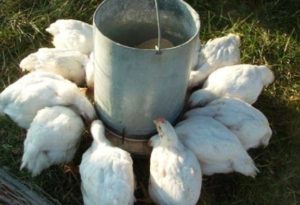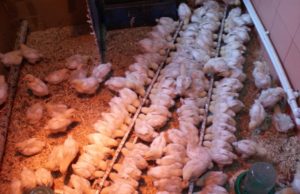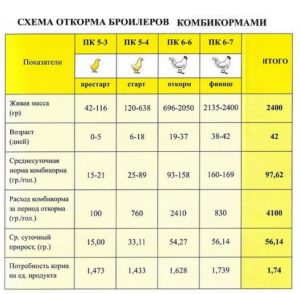This article explores what’s necessary for raising broilers at home for meat production in a short time and with minimal costs.
Broilers can be raised at home, as they require less roaming space compared to layers. They are often kept in cages, where properly chosen feed and a sedentary lifestyle allow the chickens to quickly gain weight. However, it’s better to do this in the countryside – fresh air benefits the poultry, and a separate chicken coop makes life easier for the breeder.
What’s Needed for Raising Broilers

First, don’t rush to buy young chickens. Prepare a place for them and stock up on feed. Broilers can be housed in cages or a poultry house. Disinfect all surfaces, cover the floor with sawdust or hay. Prepare feeders and drinkers, placing them so the young chicks can easily reach them.
Feed for the young is very important. Broilers receive the main growth spurt in the first month of life. It is crucial during this period that the chickens receive all necessary vitamins, veterinary drugs, minerals, and other nutrients. Missing anything in the first month means you won’t be able to catch up later.
Choosing Broiler Chicks
Buy chicks from trusted farmers. If you buy poultry from an unknown breeder, you might lose part or all of your flock. Even when purchasing from a reputable seller, always inspect the poultry.
Chicks should be lively, have clean, even fluff without bald spots, and healthy, shiny eyes. Do not take lethargic birds, even if offered at a discount or excuses are made about the weather or they’re just sleeping. Don’t risk it – this is your investment. It’s best to take 10-day-old chicks, as they have a higher survival rate.
The Chicken Coop for Broilers
More details on how to make cages for broilers with your own hands can be found here.
Now that you’ve prepared the place, feed, and bought the young stock, there are a few more things to figure out about how to raise broiler chicks at home – these include the feeding and supplementation plan, as well as the maintenance regimen.
In the beginning, the chicks will need a lot of light and warmth, so their living area should be properly equipped – remember this. The first week, the temperature in the poultry house should be around +30°C (+86°F), the second week +27°C (+80.6°F). In the third week, the heating is reduced to +24°C (+75.2°F), and then completely removed.

Since poultry is usually purchased in April, by May, heating is often not needed anymore. As hot summer days arrive, ensure the chickens aren’t overheated. Fresh, slightly warm water should always be available in the poultry house, and if the temperature exceeds +25°C (+77°F), set up a fan or arrange ventilation in some other way to prevent the chickens from overheating. In the first few weeks, light is also needed only around the feeders. After 20 days, the light can be left on only near the feeders.

Nutrition for Broilers
As mentioned earlier, the first month is crucial for fattening. The feeding scheme is as follows:

1-3 day old chicks – a mixture of boiled eggs, wheat, barley, oats, millet. All of this should be finely chopped and well-cooked.
4-20 days – fresh greens or grass flour can be mixed into the mixture. Also used are sprouted barley grains. Fiber is poorly digested by young chickens, so it’s best not to give more than 5g per head.
After 20 days, 1/5 of the grain is replaced with boiled potatoes. It’s also time for minerals: bone meal, chalk, eggshell are added to the food at 2-3g per head.
From the second month, the diet consists of succulent feeds, grass flour, grass, and compound feed. Proteins need to be reduced at this time.
The frequency of feeding also varies with age. In the first week, the chickens are fed 8 times a day in equal portions. Two-week-old chicks – 6 times, three-week-old – 4 times. Starting from the second month, broilers are fed twice a day.
Preparing for Slaughter
Poultry raised for meat should be slaughtered in a timely manner. Then the costs will pay off, and the meat you get will be tender and tasty. Only slaughter poultry when their weight consistently exceeds 2 kg. In general, readiness is determined visually.
Ruffle the feathers on the chest and closer to the underwings – if fat lumps are visible, the broiler can be slaughtered.
In the climate of the mid-latitudes with a sufficiently warm summer, it’s quite profitable to raise broiler chickens for a family at home. You start in March-April, the first batch will be ready at the beginning of summer. Then you raise a second batch. Thus, you will provide your family with tender, dietary meat for a long time. And the main plus – you know exactly what you fed the chicks. But when buying chickens in the store, we never really know – whether the poultry was pumped with growth stimulants or not.










